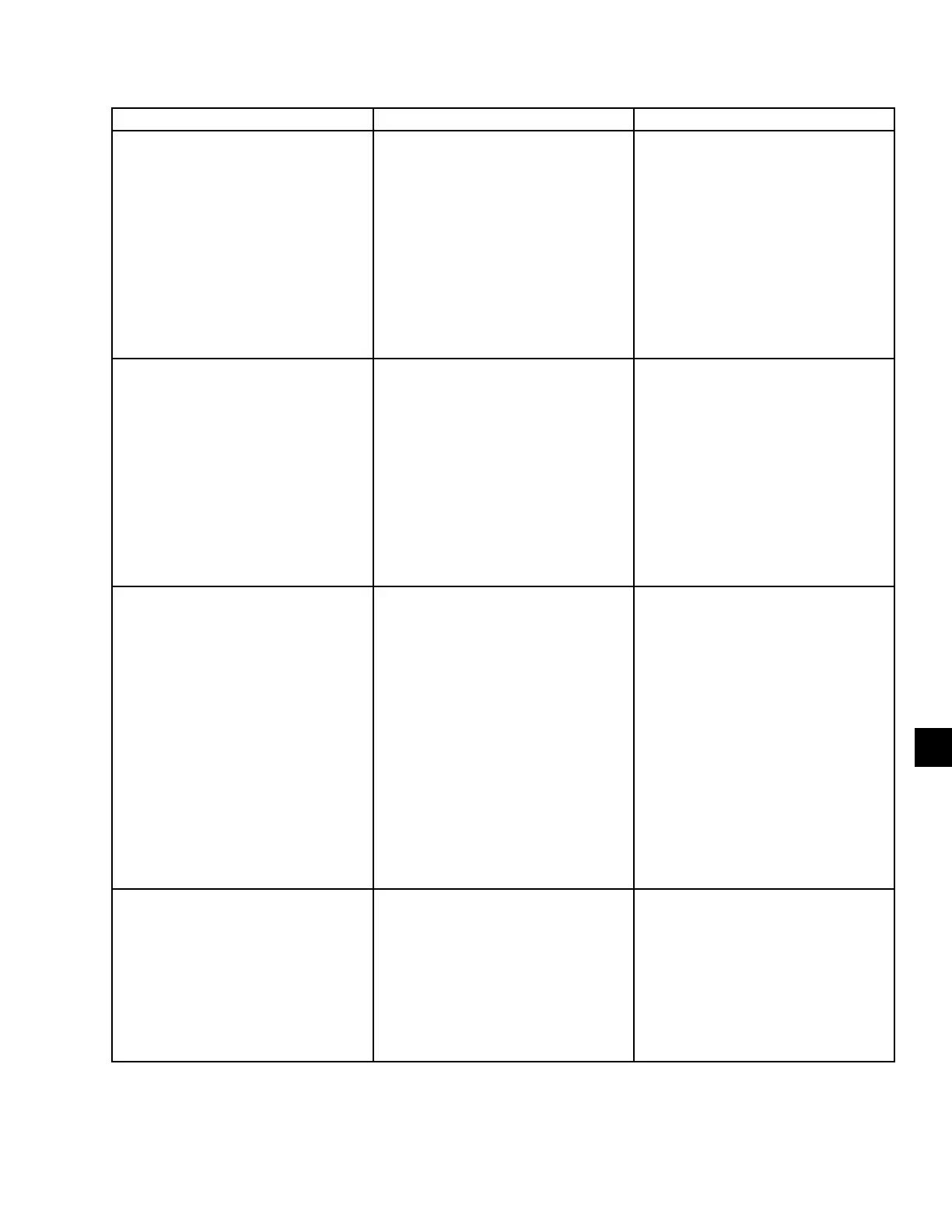JOHNSON CONTROLS
151
SECTION 9 – SERVICE AND TROUBLESHOOTING
FORM 150.73-NM1
ISSUE DATE: 09/04/2020
9
TABLE 38 - TROUBLESHOOTING (CONT’D)
PROBLEM CAUSE SOLUTION
“HIGH DISCHARGE PRESSURE”
FAULT
1. Condenser fans not operating or
operating backwards.
2. Too much refrigerant.
3. Air in refrigerant system.
4. Defective Discharge Pressure
Transducer.
1. Check Fan Motor, and Contactors.
Ensure Fan blows air upward.
2. Remove refrigerant.
3. Evacuate and recharge system.
4. Replace discharge pressure. See
SECTION 9 – SERVICE AND
TROUBLESHOOTING for pressure/
voltage formula.
“MP / HPCO” FAULT
1. Compressor Internal Motor Protector
(MP) open.
2. External overload tripped.
3. HPCO Switch open.
4. Defective HPCO Switch.
5. Defective CR Relay.
1. Verify refrigerant charge is not
low. Verify superheat setting of
10°F - 15°F (5.6°C - 8.3°C). Verify
compressor is not over loaded.
2. Determine cause and reset.
3. See “High Press. Disch.” Fault.
4. Replace HPCO Switch.
5. Replace Relay.
COMPRESSOR(S) WON’T START
1. Demand not great enough.
2. Defective Water Temperature Sensor.
3. Contactor/Overload failure.
4. Compressor failure.
1. No problem. Consult “Installation”
Manual to aid in understanding
compressor operation and capacity
control.
2. Compare the display with
a thermometer. Should be
within +/- 2 degrees. See
SECTION 9 – SERVICE AND
TROUBLESHOOTING for RWT/ LWT
temp./voltage table.
3. Replace defective part.
4. Diagnose cause of failure and
replace.
LACK OF COOLING EFFECT
1. Check DX Coil.
2. Improper air ow through the DX
Coil.
3. Low refrigerant charge. Low suction
pressure will be observed.
1. Contact the local Johnson Controls
service representative.
2. Reduce ow to within unit design
specs. See Limitations in Installation
Section.
3. Check subcooling and add charge as
needed.
